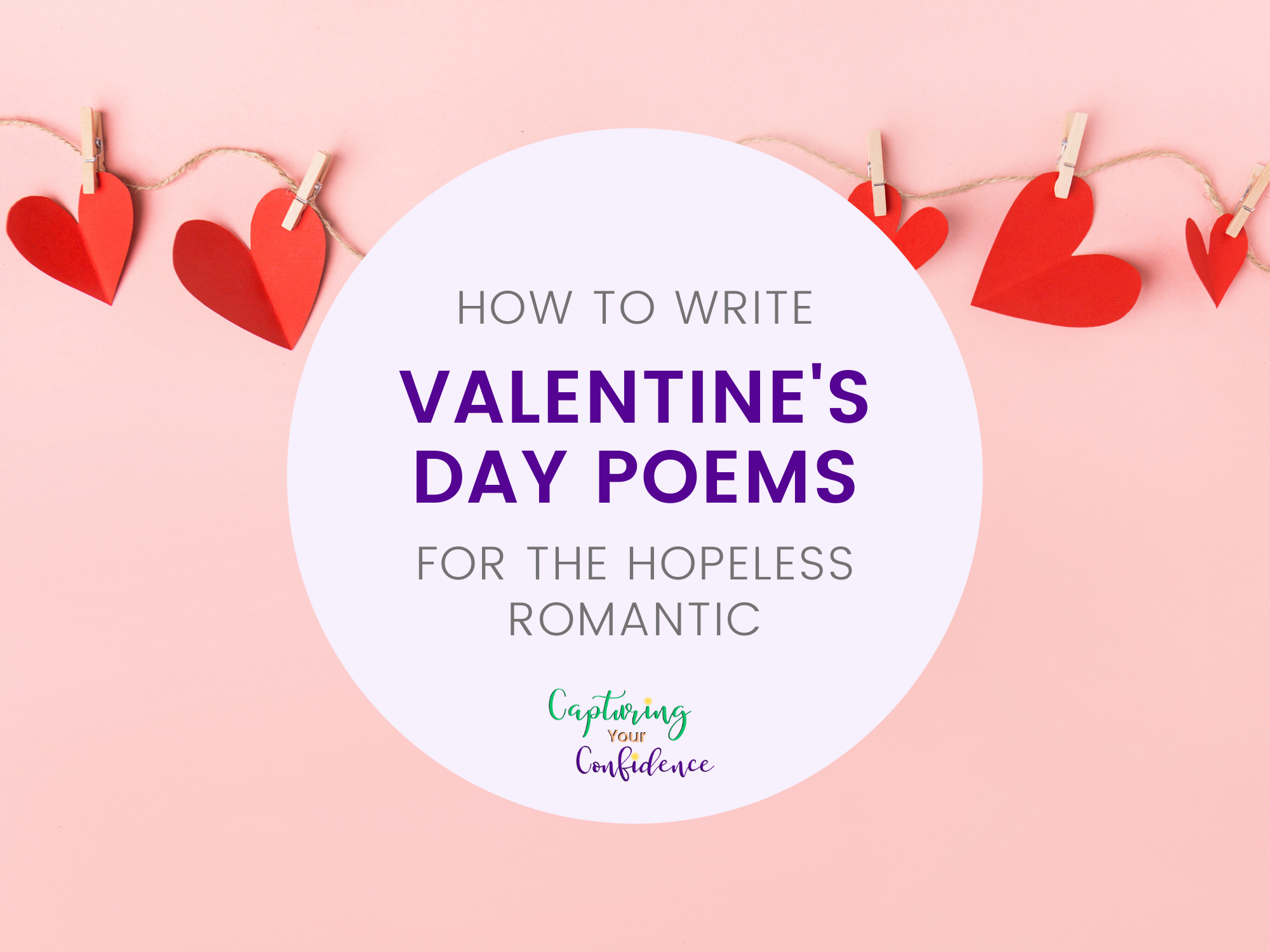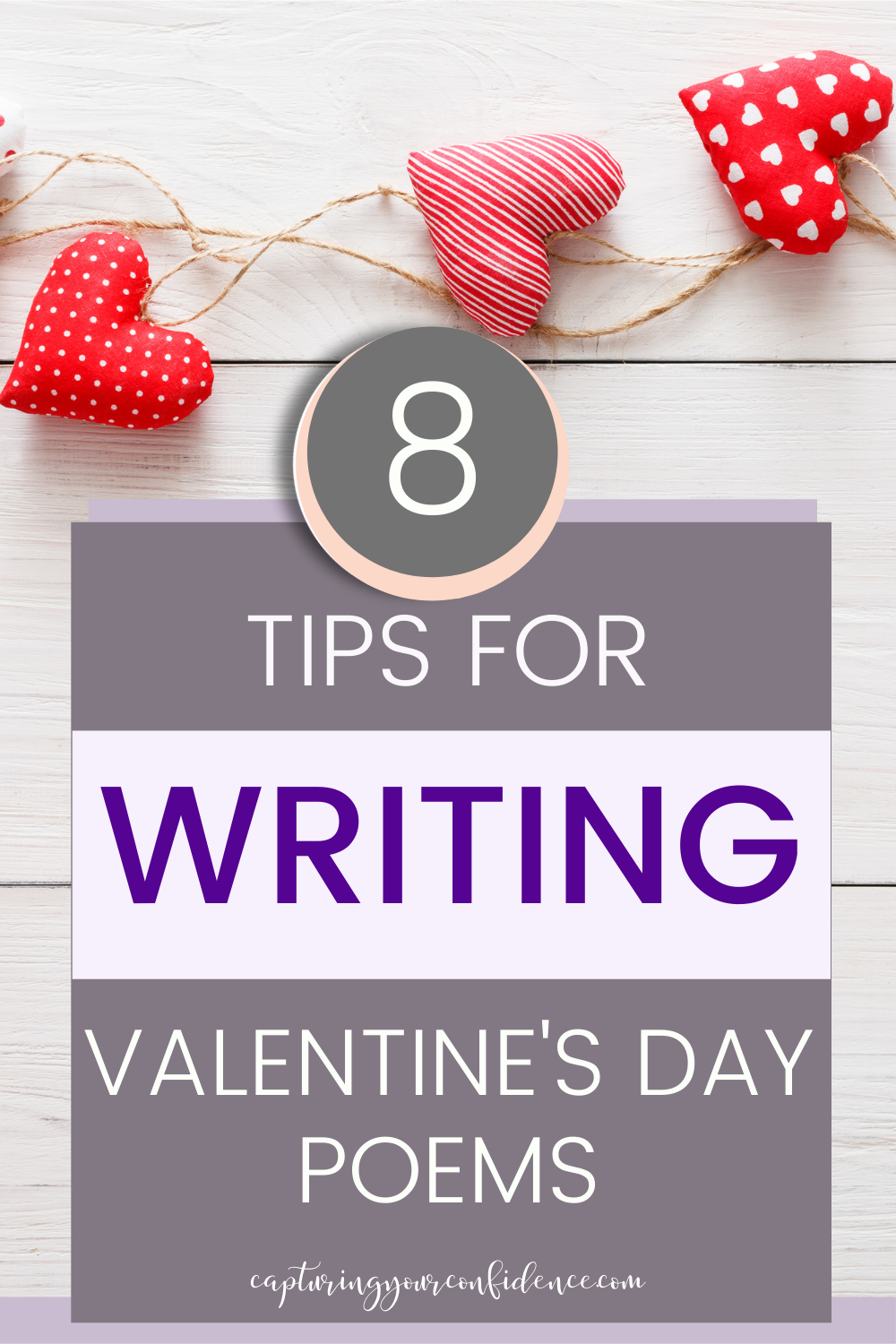How to Write Valentine’s Day Poems for the Hopeless Romantic
With Valentine’s Day right around the corner, most of us are trying to decide what to give those special people in our lives. Whether friends, family, or significant others, they all deserve to receive something heartfelt. What better gift to give than a poem written by you?
Here are some great tips on how to write a poem for the hopeless romantic in your life!
8 Tips for Writing Valentine’s Day Poems
1. Think about the person’s likes and dislikes. Start by making a list of everything we know our loved one likes and dislikes. Think about favorite movies, shows, books, foods, games, etc. The more information you have, the easier it will be to write a poem for them.
2. Think about their personality & the things you like about them. This one goes a little deeper. What do you like about the person? Are they kind, caring, funny, easygoing, honest, exciting, outgoing, or sarcastic? It’s time to add all of the personality traits that you like about your loved one to the list. This will also help you decide which type of poem they will enjoy the most!
3. Think about both of your personalities & your relationship. Why is it that your relationship with your loved one just works? Is it the witty banter, free flowing conversations, or time spent just enjoying each other’s company? Whatever it is, write it down. Think about how you interact with one another and what your relationship is like. How are you together?
4. Decide what type of poem to write. There are many types of poems. People spend their whole lives working on these things! BUT, for Valentine’s Day, you have a few simpler options.
Haiku
A haiku is a three line poem that originated in Japan. The first line is made up of 5 syllables, the second 7 syllables and the third 5 syllables.
Here’s an example of a haiku:
Love makes me feel high
Like I’m flying in the sky
Would you like to try?
- Holly -
Limerick
A limerick is a poem containing 5 lines. The rhyming scheme for these poems is AA/BB/A. Limericks are meant to be crude, funny, or whimsical. Here is an example. It incorporates a tiny bit of that crudeness factor and whimsy, without getting really inappropriate.
Here’s an example of a limerick:
I once met a boy in blue,
handsome and very sweet too.
I thought in my head,
please jump in my bed,
and wouldn’t you know, it was you!
- Holly -
Sonnet
There are different types of sonnets, but Shakespearean sonnets are well known for being love poems. A Shakespearean sonnet follows this rhyme scheme: ABAB/CDCD/EFEF/GG. The first 3 sections are called quatrains because of the 4 lines and the final section is a couplet because there are only 2 lines.
Here’s one of Shakespeare’s most famous sonnets:
Shall I compare thee to a summer’s day?
Thou art more lovely and more temperate:
Rough winds do shake the darling buds of May,
And summer’s lease hath all too short a date:
Sometime too hot the eye of heaven shines,
And often is his gold complexion dimm’d;
And every fair from fair sometime declines,
By chance or nature’s changing course untrimm’d;
But thy eternal summer shall not fade
Nor lose possession of that fair thou owest;
Nor shall Death brag thou wander’st in his shade,
When in eternal lines to time thou growest:
So long as men can breathe or eyes can see,
So long lives this and this gives life to thee.
- William Shakespeare -
Acrostic
An acrostic poem spells a word or name with the first letter of each line. It doesn’t have to rhyme or have any certain number of lines - just as many as there are letters in the word or name you choose! Each line should describe the word or name in some way.
Here’s an example acrostic poem by famous writer Edgar Allen Poe:
Elizabeth it is in vain you say
"Love not" — thou sayest it in so sweet a way:
In vain those words from thee or L. E. L.
Zantippe's talents had enforced so well:
Ah! if that language from thy heart arise,
Breathe it less gently forth — and veil thine eyes.
Endymion, recollect, when Luna tried
To cure his love — was cured of all beside —
His folly — pride — and passion — for he died.
- Edgar Allen Poe -
Free Verse
Free verse poetry can be the easiest, but it can also be the hardest. If you choose this style, you can follow whatever rhyme scheme you want, or you don’t have to rhyme at all. Free verse is my usual go-to when writing poems, but sometimes it’s easier if you have a guideline to follow like you do with the other types of poetry.
Here’s an example of free verse poetry from famed author e.e. cummings:
i carry your heart with me(i carry it in
my heart)i am never without it(anywhere
i go you go,my dear;and whatever is done
by only me is your doing,my darling)
i fear
no fate(for you are my fate,my sweet)i want
no world(for beautiful you are my world,my true)
and it’s you are whatever a moon has always meant
and whatever a sun will always sing is you
here is the deepest secret nobody knows
(here is the root of the root and the bud of the bud
and the sky of the sky of a tree called life;which grows
higher than soul can hope or mind can hide)
and this is the wonder that's keeping the stars apart
i carry your heart(i carry it in my heart)
- e.e. cummings -
5. Decide how much information you need & what to use. The type of poem you decide to write, will determine how much information you want/need to include. For example, a haiku could only use three of your brainstormed ideas at most. But any of the others would need more. If you choose a limerick, it may be more appropriate to tie in some of the dislikes you thought of and turn them into jokes (as long as you know the receiver will find them funny, too!)
6. Start drafting. Most poems take a few drafts to get right. If you’re writing a rhyming poem, it may be useful to pull up both dictionary and thesaurus websites. Not all poems have to rhyme, though! If you don’t want to worry about rhyming, you can choose to write a haiku, acrostic, or free verse poem. Sonnets and limericks typically must include rhymes.
7. Read it out loud. A poem can look great on paper, but you don’t truly know whether it flows until you read it aloud. Pick out any words or lines that could be changed to better the poem as a whole. Don’t put too much pressure on yourself to make it perfect - as long as you’re happy with the outcome, and you think your loved one will enjoy it, then it’s ready!
8. Finalize the details. It’s time to make the changes we picked out in step 7 and finalize your poem! Finalizing your poem includes choosing whether you will print it out on fancy paper, with pictures, handwriting, and of course - what you want your title to be! I like to use the first line of the poem as the title, but you can be more creative if you want. Poems don’t necessarily need a title. You can always just use the name of who the poem is for, too. These little details are up to you!
Writing poems can be a great way to show we care for someone, but it can also be a lot of fun! Sometimes we surprise ourselves with what we’re able to create. Though there are many different types of poems, and certain “rules” to follow, in the end, we can write poems however we like. They are a way to express our creativity and have a little fun.
A Free Verse Poem for You, Reader
This blog is for you
those who love to write too,
reading and supporting,
our work as you do,
means so much and more
than can be expressed,
thank you to all
and Happy Valentine’s Day to the best!
I challenge you to write a poem for a loved one or significant other.
Have you written poetry before? What type have you tried? How did it go? I’d love to hear about your experiences and recommendations! Find me on social media or drop a comment below.
Let’s chat because you, my friend, are on your way to great writing (and possibly great romance, if your poem goes well!).




